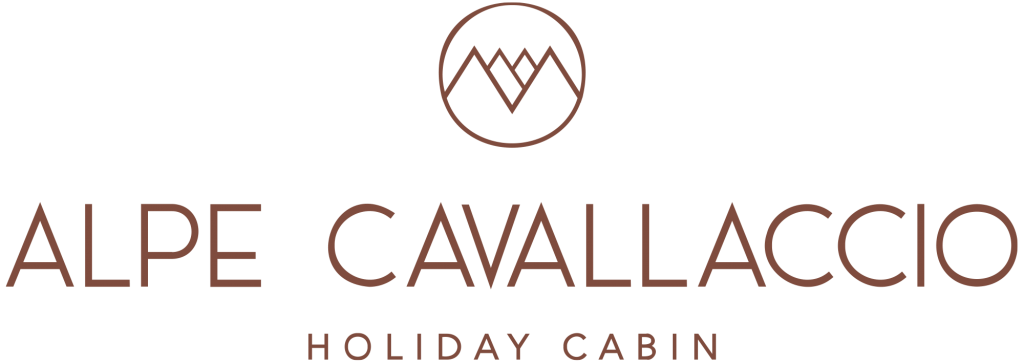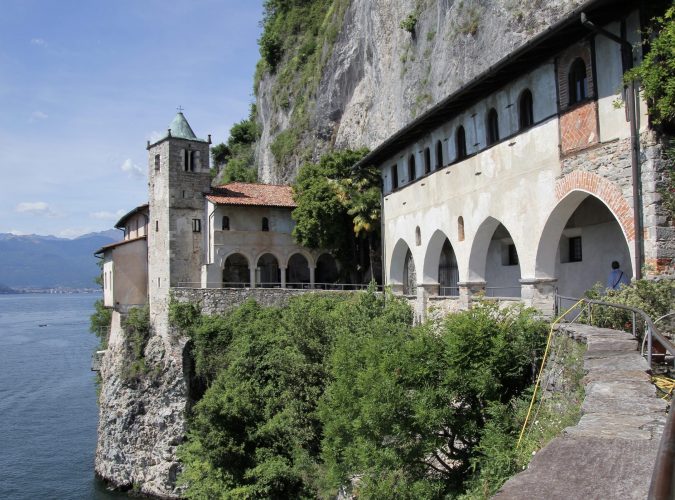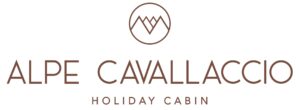Clinging to a rock face directly overhanging the lake, the Hermitage of Santa Caterina del Sasso is certainly one of the most charming sights of Lago Maggiore.
The church
Clinging to a rock face directly overhanging the lake, the Hermitage of Santa Caterina del Sasso is certainly one of the most charming sights of Lago Maggiore. The entrance to the church is through a portico consisting of four round, renaissance-style arches. The structure of the current building is truly unique, the fusion of three chapels, originally built separately in three different eras. There are numerous pictorial cycles both inside and outside the Church, mainly covering the period running between the 14th and the 19th century. Art and history merge wonderfully in this most striking of natural frames, almost a balcony leaning out towards the Borromeo Gulf, Stresa and the islands.
The first structure found after entering the Hermitage is the Southern Convent (14th – 17th century), with interesting frescos in the fireplace hall, then comes the small convent (13th century), where the area below the windows of the first floor is decorated by a long 17th-century fresco inspired by the Dance of Death, and finally the Church, which incorporates the Chapel of Santa Caterina.
The portico walls hold another important cycle of 16th-century frescoes, depicting Santa Lucia, Santa Maddalena and Santa Caterina, and the same number of Saints, among whom we can recognise Peter of Verona and Nicholas of Bari. Inside the church, note the Blessing Christ in mandorla, surrounded by the symbols of the four Evangelists (Mathew, Mark, Luke and John) dominating the Church altar from above, while the two side wings hold the enthroned Doctors of the Church. The pictorial sky would appear to allude at the spread of the holy word and was probably painted by an artist identified as the Master of Sant’Abbondio. The most recent restoration work executed on the walls of this chapel has brought to light the remains of another 14th-centry cycle of frescos, where the splendid fragment of a Crucifixion scene is particularly striking. The painted areas below the three arches show King David with his harp and scroll (on the mountain wall), an angel waking Prophet Elijah (on the internal wall), and Melchizedek on his throne (on the lake wall).
The Presbytery, on the other hand, is in pure Baroque style (1610-1612) with frescos by De Advocatis, the most striking of which are a “Mystical Marriage” of Santa Caterina, and the figures, on either side of the altar, of the Blessed Giuliana of Busto and Caterina of Pallanza. Another of the Hermitage’s important figurative documents is the Deposition found in the Chapter House. The vivid colours and the energy of the painting (particularly in the group of armed warriors, also interesting for the accurate portrayal of the armour), forcibly changing the physiognomy, make it a unique example of great interest for the Varese area, and probably dates back to around the middle of the 14th century.
The bell tower
The rectangular-based bell tower, also constructed in the 14th century, is 15 metres high, including the spire and the cross. The tower was originally built as the bell tower for the Church of San Nicolao, the original independent entrance to which is now walled up. Today’s entrance door leading to the church from the renaissance portico was opened up in the 16th century, when the churches were brought together and combined in the present holy building. Various types of building material were used to construct the tower: for example, the stones in the corners are more finely carved and squared. The belfry has an opening on each side: four slits surmounted by architraves, one of which (on the north side) has been walled up, while the two that are visible have been bisected by small columns, giving them a mullioned look. The sacellum is also interesting: the heart and the first nucleus of the Sanctuary, dating back to 1195. It was built on much lower level than the other parts of the Church, with the same dimensions as the Sepulchre of Santa Caterina in Sinai. The fresco on the external wall above the window shows the transportation of the body of Santa Caterina to Mount Sinai by the angels; the façade instead has frescos showing the marriage of the Saint, between Saint Ambrose, Saint Gregory the Great and Saint Augustine. These frescos date back to the 16th century. The relics of the Blessed Alberto Besozzi have been kept inside the sacellum since 1535, and the vault is frescoed with a sunburst encompassing the Holy Spirit, in the form of a dove and surrounded by angels. The area below the arch holds an 1892 fresco depicting the Blessed Alberto at prayer. An exhibition in the chapter house contains precious photographic documentation illustrating the demanding restoration work executed by the Province, which each year hosts a programme of summer concerts.



